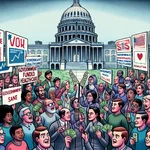Welcome to this comprehensive IELTS Reading practice session focused on the crucial topic of how education can mitigate cultural conflicts. As an experienced IELTS instructor, I’ve crafted this practice test to help you sharpen your reading skills while exploring this important subject. Let’s dive into the passages and questions that will challenge your comprehension and analytical abilities.
IELTS Reading Practice Test
Passage 1 – Easy Text
Education as a Bridge Between Cultures
In today’s interconnected world, the role of education in fostering cultural understanding and mitigating conflicts has become increasingly significant. As globalization continues to bring diverse communities into closer contact, the need for effective cross-cultural communication and cooperation has never been more pressing. Education serves as a powerful tool in this regard, offering a platform for individuals to learn about different cultures, challenge their own biases, and develop the skills necessary to navigate a multicultural society.
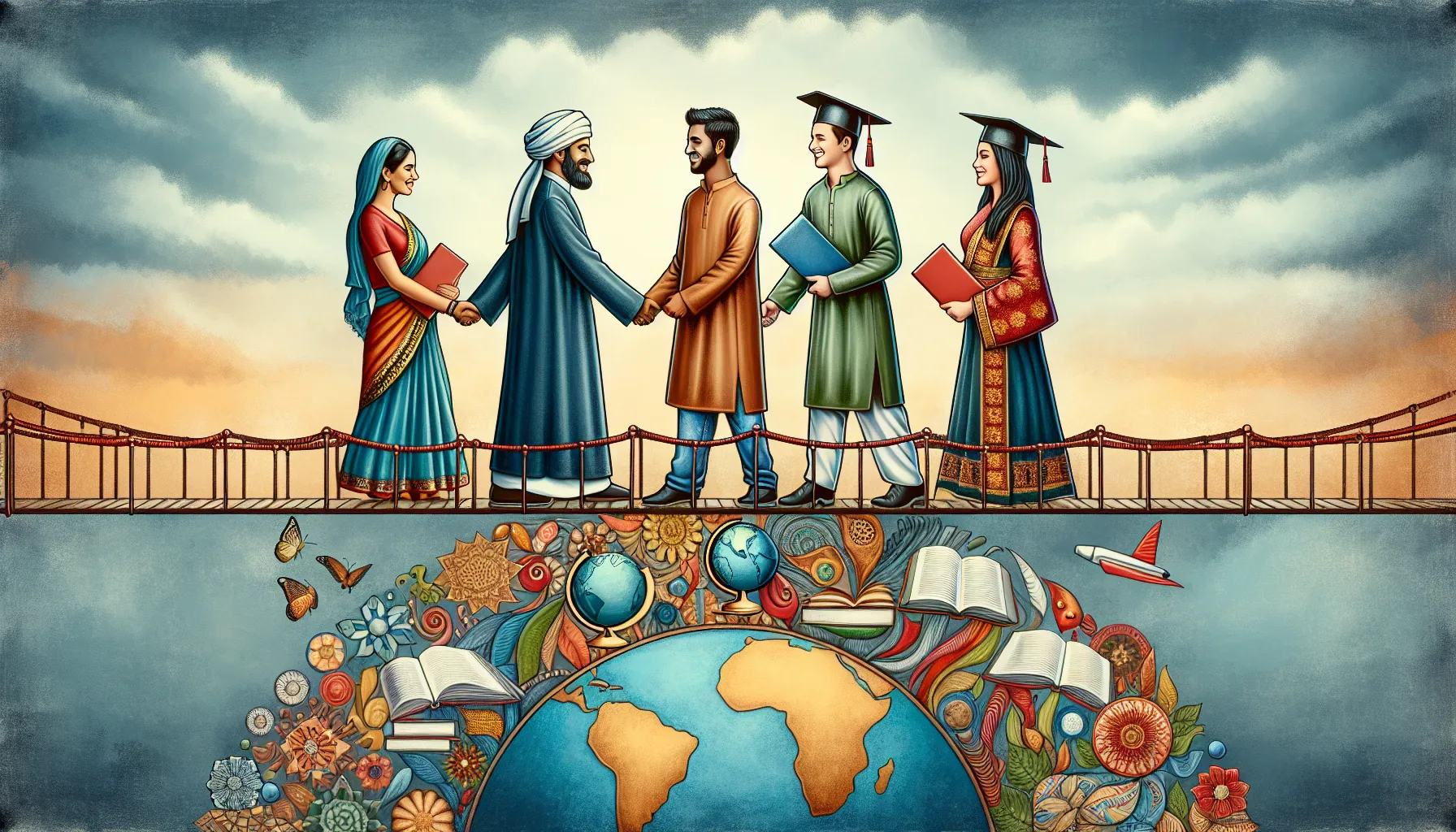 Education Bridging Cultures
Education Bridging Cultures
One of the primary ways education contributes to cultural harmony is through the promotion of cultural literacy. By incorporating diverse perspectives and histories into curricula, schools can help students develop a more nuanced understanding of the world around them. This approach not only broadens students’ horizons but also encourages empathy and respect for different cultural traditions and practices. Moreover, educational institutions that prioritize cultural diversity in their student body and faculty create environments where intercultural interactions become a daily reality, fostering natural cultural exchange and understanding.
Language education plays a crucial role in this process. By learning foreign languages, students gain not just linguistic skills but also insights into the cultural contexts in which these languages are used. This linguistic and cultural knowledge equips them with the tools to communicate effectively across cultural boundaries and reduces the likelihood of misunderstandings that can lead to conflicts.
Furthermore, educational programs that focus on conflict resolution and peace studies provide students with practical skills to address and resolve cultural tensions constructively. These programs teach negotiation techniques, active listening, and problem-solving strategies that are invaluable in multicultural settings. By learning to approach differences with curiosity and openness rather than fear or hostility, students become better prepared to navigate the complexities of a diverse world.
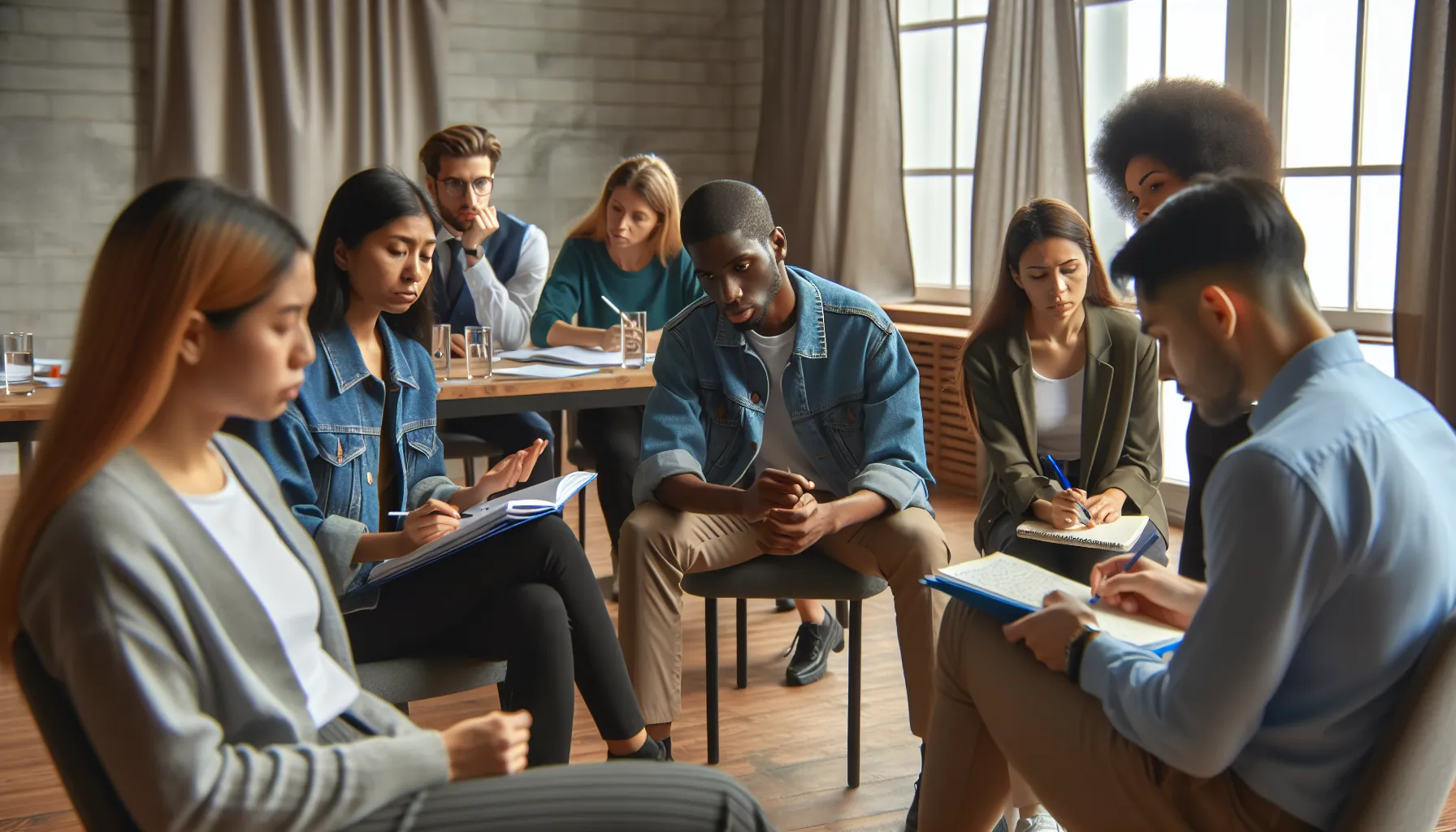 Students Learning Conflict Resolution Skills
Students Learning Conflict Resolution Skills
The impact of education in mitigating cultural conflicts extends beyond the classroom. As educated individuals enter the workforce and take on leadership roles in various sectors, they bring with them a more nuanced understanding of cultural dynamics. This can lead to more inclusive policies and practices in business, government, and civil society, creating a ripple effect that promotes greater cultural harmony on a societal level.
In conclusion, education serves as a powerful force for bridging cultural divides and fostering a more harmonious global society. By equipping individuals with knowledge, skills, and attitudes necessary for cross-cultural understanding, educational institutions play a vital role in preparing the next generation to address and prevent cultural conflicts effectively.
Questions for Passage 1
1-5. Do the following statements agree with the information given in the passage?
Write:
TRUE if the statement agrees with the information
FALSE if the statement contradicts the information
NOT GIVEN if there is no information on this
- Globalization has increased the importance of cross-cultural communication.
- Cultural literacy is primarily taught through foreign language courses.
- Diverse student bodies in educational institutions naturally promote cultural exchange.
- Peace studies programs are mandatory in most educational systems worldwide.
- Educated individuals are more likely to implement inclusive policies in their professional roles.
6-10. Complete the sentences below.
Choose NO MORE THAN TWO WORDS from the passage for each answer.
- Education helps individuals challenge their own ___ about other cultures.
- Learning foreign languages provides insights into the of those languages.
- Conflict resolution programs teach students to address cultural tensions.
- The impact of education on cultural harmony creates a throughout society.
- Educational institutions play a vital role in preparing the next generation to and cultural conflicts.
Passage 2 – Medium Text
The Role of Digital Literacy in Bridging Cultural Divides
In the digital age, the concept of cultural literacy has evolved to encompass not only traditional forms of cultural knowledge but also the ability to navigate and interpret digital spaces where cultural exchange increasingly occurs. Digital literacy, therefore, has become a crucial component in education’s role of mitigating cultural conflicts. As online platforms continue to connect individuals from diverse backgrounds, the skills to critically engage with digital content, communicate effectively in virtual environments, and understand the nuances of online cultural expressions have become essential for fostering cross-cultural understanding and reducing potential conflicts.
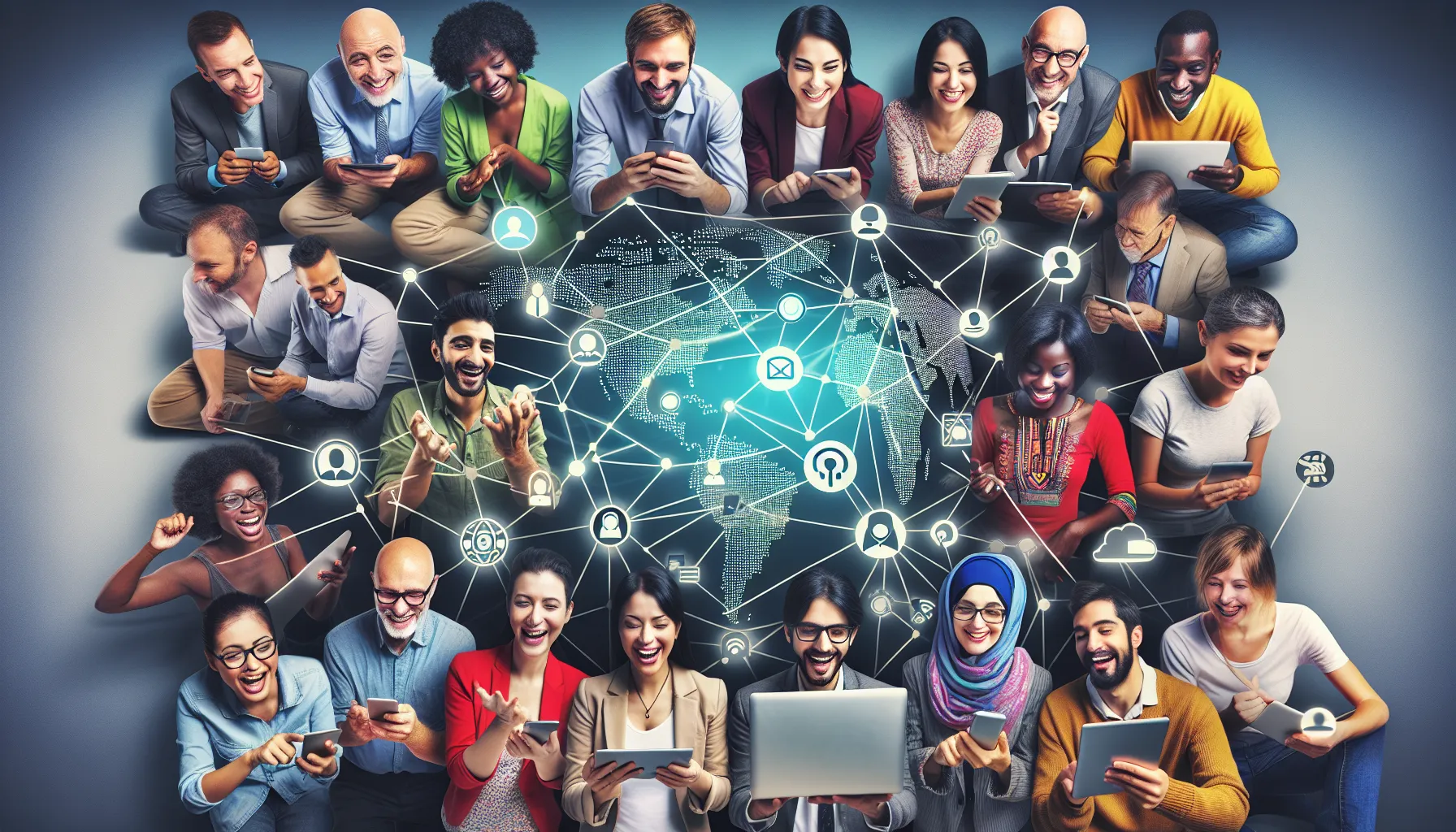 Digital Literacy for Cultural Exchange
Digital Literacy for Cultural Exchange
Digital literacy programs address cultural barriers by equipping students with the tools to evaluate online information critically. In a world where misinformation and cultural stereotypes can spread rapidly through social media, the ability to discern credible sources and recognize bias is paramount. These programs teach students to question the origin and intent of digital content, encouraging a more thoughtful and nuanced approach to cultural representations encountered online. By developing these critical thinking skills, students are better prepared to challenge misconceptions and engage in constructive dialogues across cultural boundaries.
Moreover, digital literacy enhances students’ capacity to participate in online communities that foster cross-cultural collaboration. These virtual spaces provide unique opportunities for individuals to engage with peers from different cultural backgrounds, share experiences, and work together on common projects. Through guided participation in these online communities, students learn to navigate cultural differences in digital contexts, develop empathy, and build relationships that transcend geographical and cultural boundaries. This firsthand experience in cross-cultural digital collaboration is invaluable in preparing students for a globalized workforce and society.
The integration of digital storytelling in education further contributes to cultural understanding. Digital platforms offer innovative ways for students to share their cultural narratives and experiences with a global audience. Through multimedia projects, blogs, and social media campaigns, students can express their cultural identities and perspectives, fostering a richer, more diverse digital landscape. This not only empowers students to take pride in their cultural heritage but also exposes others to authentic cultural voices, challenging stereotypes and promoting empathy.
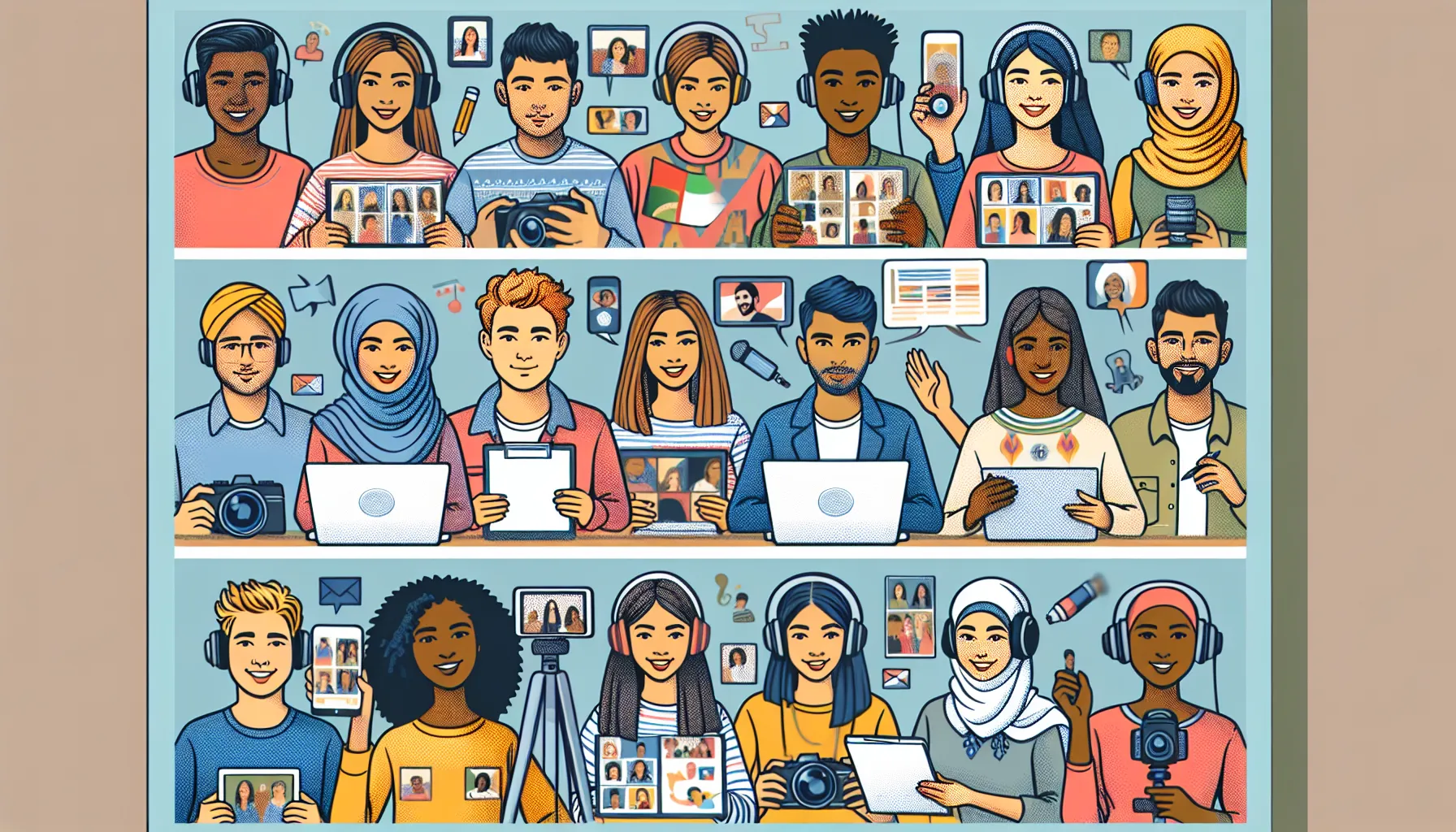 Students Engaging in Digital Storytelling
Students Engaging in Digital Storytelling
However, the implementation of digital literacy programs faces challenges, particularly in addressing the digital divide that exists both within and between societies. Unequal access to technology and the internet can exacerbate cultural misunderstandings and conflicts by limiting certain groups’ participation in digital cultural exchanges. Therefore, efforts to promote digital literacy must be coupled with initiatives to increase access to digital technologies, ensuring that the benefits of digital cultural exchange are accessible to all.
Furthermore, as artificial intelligence and machine learning technologies advance, digital literacy education must evolve to include an understanding of how these technologies can both perpetuate and challenge cultural biases. Students need to be aware of the potential for algorithmic bias in content recommendation systems and search engines, which can reinforce cultural stereotypes or limit exposure to diverse perspectives. By developing this awareness, students can become more critical consumers and creators of digital content, actively working to promote cultural inclusivity in digital spaces.
In conclusion, digital literacy plays a pivotal role in education’s mission to mitigate cultural conflicts in the modern era. By empowering students with the skills to navigate digital cultural landscapes critically and empathetically, educational institutions can foster a generation of global citizens equipped to bridge cultural divides in both virtual and physical worlds. As technology continues to shape how we interact across cultures, the importance of digital literacy in promoting cultural understanding and harmony will only grow.
Questions for Passage 2
11-14. Choose the correct letter, A, B, C, or D.
-
According to the passage, digital literacy is crucial for:
A) Replacing traditional forms of cultural knowledge
B) Enhancing technical skills in computer programming
C) Navigating and interpreting digital spaces of cultural exchange
D) Promoting the use of social media among students -
Digital literacy programs address cultural barriers by:
A) Restricting access to potentially biased information
B) Teaching students to critically evaluate online information
C) Encouraging students to avoid digital platforms entirely
D) Promoting a single cultural perspective online -
The passage suggests that digital storytelling:
A) Should replace traditional forms of cultural expression
B) Is only effective for certain cultural groups
C) Empowers students to express their cultural identities
D) Is too complex for educational settings -
The main challenge in implementing digital literacy programs is:
A) Lack of interest from students
B) Resistance from traditional educators
C) The digital divide within and between societies
D) The cost of digital technologies
15-20. Complete the summary below.
Choose NO MORE THAN TWO WORDS from the passage for each answer.
Digital literacy has become essential in education’s role of mitigating cultural conflicts. It equips students with skills to critically engage with digital content and communicate in virtual environments. Digital literacy programs teach students to recognize (15) and evaluate information sources. Online communities provide opportunities for (16) , allowing students to develop empathy and build relationships across cultures. Digital storytelling enables students to share their (17) with a global audience, challenging stereotypes. However, the (18) poses a challenge to equal participation in digital cultural exchanges. Additionally, students need to understand how (19) can affect cultural representation in digital spaces. Ultimately, digital literacy aims to create (20) ___ capable of bridging cultural divides in both virtual and physical worlds.
Passage 3 – Hard Text
The Synergy of Traditional Knowledge Systems and Modern Education in Cultural Conflict Resolution
In the quest to mitigate cultural conflicts through education, a paradigm shift is occurring that recognizes the value of integrating traditional knowledge systems with modern educational approaches. This synergistic approach acknowledges that indigenous and local knowledge systems, developed over generations, offer profound insights into sustainable living, conflict resolution, and cultural harmony that can complement and enhance contemporary educational paradigms. By bridging these often disparate worlds of knowledge, educational institutions are discovering new pathways to foster intercultural understanding and address complex global challenges.
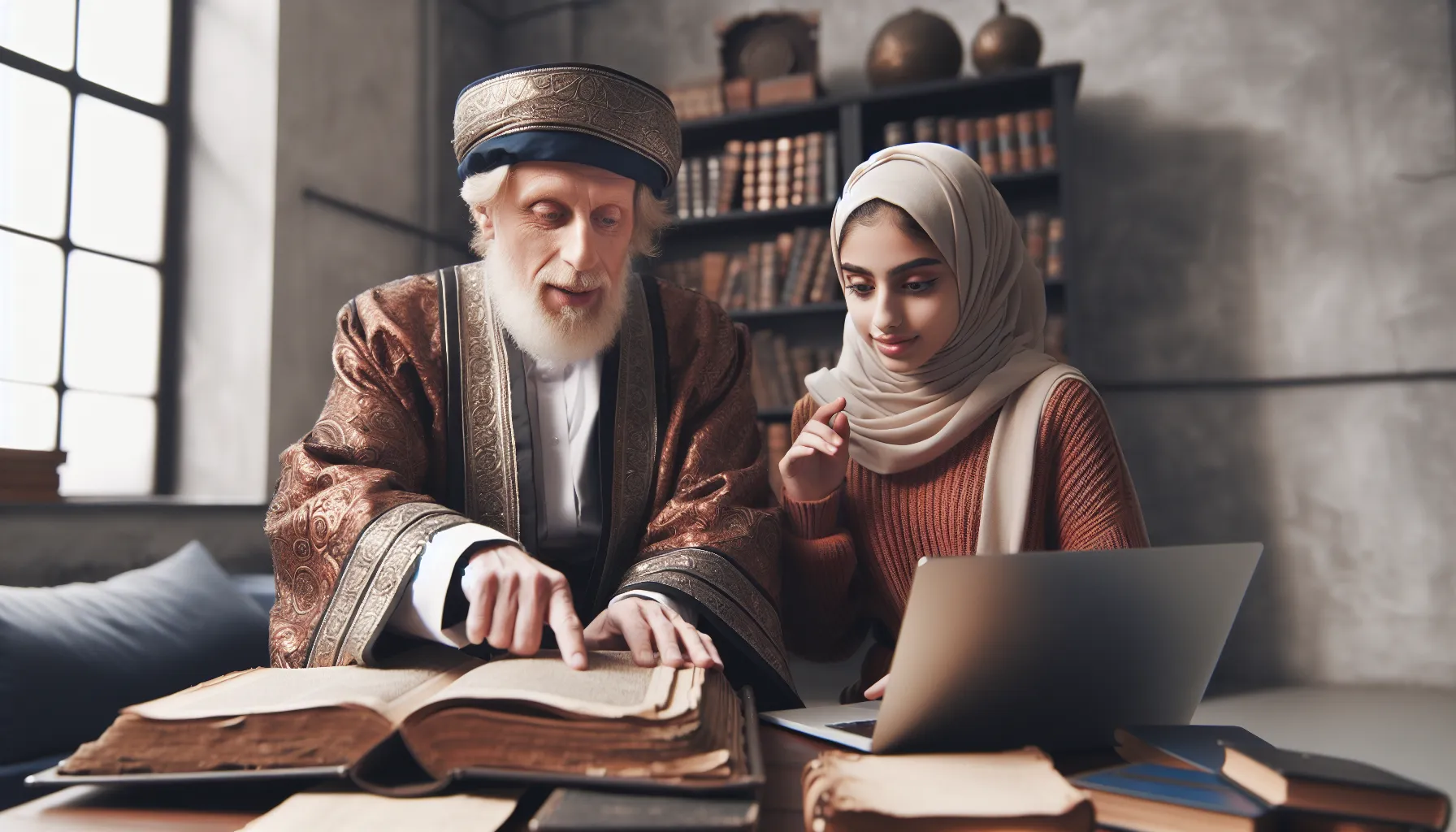 Synergy of Traditional and Modern Education
Synergy of Traditional and Modern Education
The integration of traditional knowledge into formal education systems represents a departure from the historical tendency to prioritize Western epistemologies at the expense of indigenous ways of knowing. This shift is predicated on the understanding that traditional knowledge systems embody holistic worldviews that often emphasize interconnectedness, respect for nature, and communal problem-solving—principles that are increasingly recognized as crucial for addressing global issues such as climate change, biodiversity loss, and cultural conflicts. By incorporating these perspectives into curricula, educational institutions can provide students with a more comprehensive understanding of the world and the diverse ways in which human societies have developed sustainable practices and conflict resolution mechanisms.
One of the most significant contributions of traditional knowledge to cultural conflict resolution lies in its emphasis on relational thinking and communal harmony. Many indigenous cultures have developed sophisticated systems for maintaining social cohesion and resolving disputes that prioritize restoring relationships and maintaining community balance over punitive justice. These approaches often involve practices such as circle dialogues, storytelling, and communal decision-making processes that can offer valuable insights for modern conflict resolution strategies. By exposing students to these alternative models of conflict resolution, education can broaden their repertoire of tools for addressing cultural tensions and fostering mutual understanding.
Moreover, the inclusion of traditional ecological knowledge (TEK) in environmental education exemplifies how indigenous wisdom can complement scientific approaches to global challenges. TEK encompasses the cumulative body of knowledge, practices, and beliefs about the relationships between living beings and their environment, passed down through generations. This knowledge often provides nuanced, place-based understanding of ecosystems that can enhance scientific research and inform more sustainable resource management practices. By integrating TEK into environmental curricula, educational institutions can foster a more holistic understanding of human-nature relationships and promote cultural respect for diverse approaches to environmental stewardship.
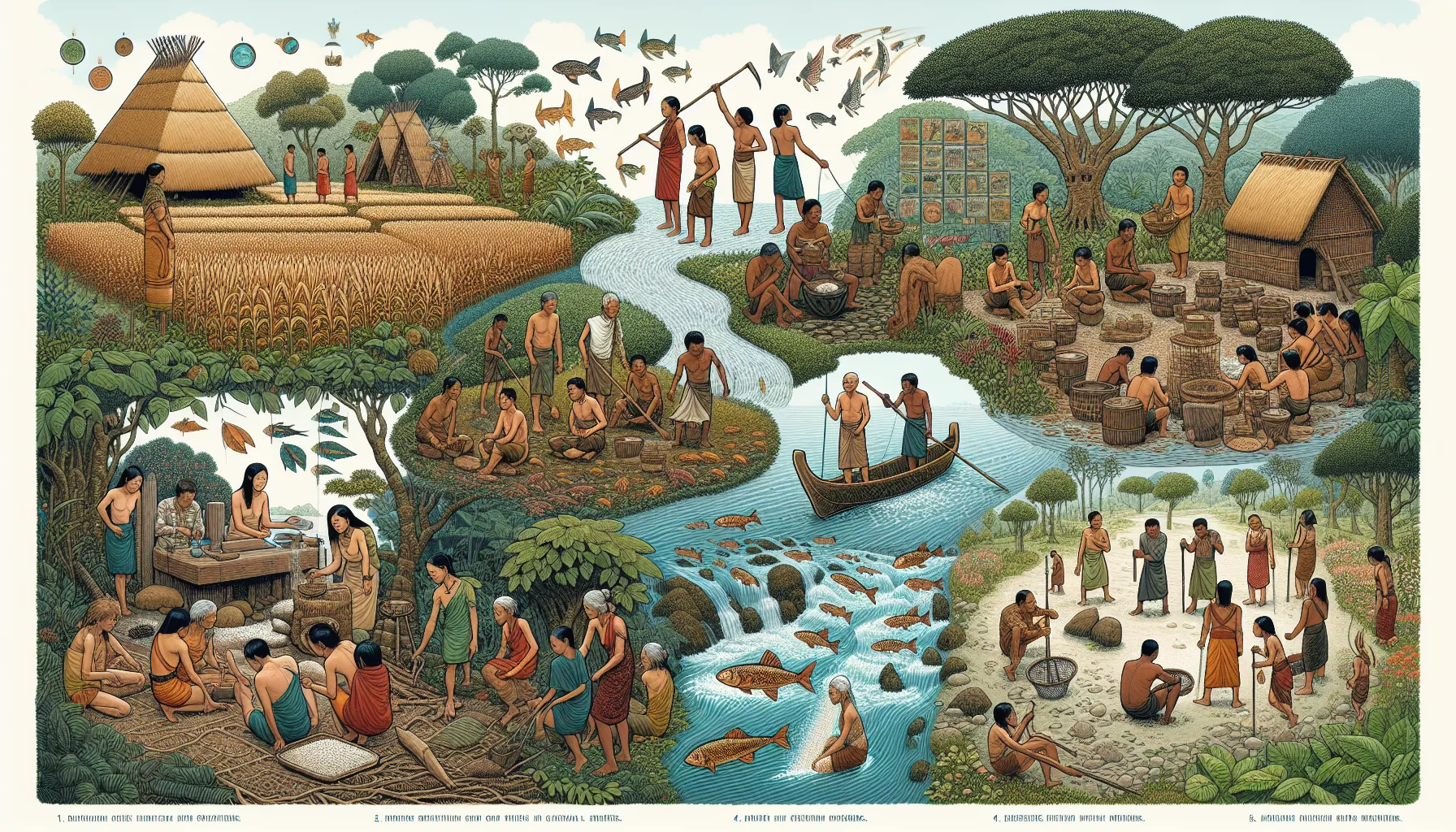 Traditional Ecological Knowledge in Practice
Traditional Ecological Knowledge in Practice
However, the integration of traditional knowledge into formal education systems is not without challenges. There are concerns about the appropriate ways to incorporate indigenous knowledge without decontextualizing or commodifying it. The power dynamics inherent in deciding whose knowledge is taught and how it is presented require careful consideration to avoid perpetuating colonial attitudes or misappropriating cultural heritage. Additionally, there is the challenge of bridging epistemological differences between traditional and Western scientific paradigms, which may have fundamentally different approaches to validating knowledge claims.
To address these challenges, many educational institutions are adopting collaborative approaches that involve indigenous communities in curriculum development and teaching. This co-creation process ensures that traditional knowledge is presented accurately and respectfully, with appropriate cultural context. It also provides opportunities for direct intercultural dialogue and learning, as students engage with knowledge holders from diverse cultural backgrounds. Such collaborations can serve as models for respectful cross-cultural partnerships, demonstrating how different knowledge systems can work together to address shared challenges.
The potential of integrating traditional knowledge with modern education extends beyond the classroom. As students exposed to diverse epistemologies enter professional fields, they bring with them a more nuanced understanding of cultural diversity and alternative approaches to problem-solving. This can lead to more inclusive and innovative practices in fields such as medicine, environmental management, and international relations. For instance, the growing recognition of traditional medicine in complementary healthcare approaches illustrates how indigenous knowledge can inform and enhance modern practices.
In conclusion, the integration of traditional knowledge systems with modern education represents a powerful approach to mitigating cultural conflicts and fostering global understanding. By valuing and incorporating diverse ways of knowing, educational institutions can equip students with a more comprehensive toolkit for navigating cultural differences and addressing complex global challenges. This synergistic approach not only enriches the educational experience but also promotes a more inclusive and sustainable vision of global society. As we continue to grapple with intercultural tensions and environmental crises, the wisdom embedded in traditional knowledge systems offers valuable lessons for creating a more harmonious and resilient world.
Questions for Passage 3
21-26. Complete the summary using the list of words, A-K, below.
The integration of traditional knowledge systems with modern education offers a new approach to (21) cultural conflicts. This approach recognizes the value of indigenous knowledge in providing insights into (22) and cultural harmony. Traditional knowledge systems often emphasize (23) and communal problem-solving, which are increasingly seen as crucial for addressing global issues. One significant contribution is the emphasis on (24) in conflict resolution, prioritizing the restoration of relationships over punitive justice. The inclusion of Traditional Ecological Knowledge (TEK) in environmental education demonstrates how indigenous wisdom can (25) scientific approaches. However, integrating traditional knowledge into formal education systems faces challenges, including concerns about (26) indigenous knowledge.
A. sustainable living
B. technological advancement
C. interconnectedness
D. mitigating
E. relational thinking
F. economic development
G. complement
H. individualism
I. decontextualizing
J. urbanization
K. standardizing
27-30. Do the following statements agree with the information given in the passage?
Write:
TRUE if the statement agrees with the information
FALSE if the statement contradicts the information
NOT GIVEN if there is no information on this
- Traditional knowledge systems are considered superior to Western scientific approaches in all aspects of education.
- Incorporating traditional knowledge into curricula can provide students with a more comprehensive understanding of the world.
- The integration of traditional knowledge into formal education is a straightforward process without any challenges.
- Collaborative approaches involving indigenous communities in curriculum development help ensure respectful presentation of traditional knowledge.
31-35. Choose the correct letter, A, B, C, or D.
-
According to the passage, traditional ecological knowledge (TEK):
A) Is irrelevant to modern environmental challenges
B) Provides place-based understanding of ecosystems
C) Should replace scientific approaches to environmental education
D) Is only applicable in indigenous communities -
The main challenge in integrating traditional knowledge into formal education is:
A) Lack of interest from students
B) Insufficient funding for new programs
C) Avoiding decontextualization and misappropriation
D) Resistance from scientific communities -
The passage suggests that students exposed to diverse epistemologies:
A) Are less likely to succeed in professional fields
B) May bring more inclusive practices to their professions
C) Will reject modern scientific approaches entirely
D) Are only suitable for careers in cultural studies -
The growing recognition of traditional medicine in healthcare approaches is presented as an example of:
A) The superiority of traditional knowledge over modern science
B) The failure of modern medical practices
C) How indigenous knowledge can inform and enhance modern practices
D) The complete replacement of modern medicine with traditional approaches -
The overall message of the passage is that:
A) Traditional knowledge should replace modern education entirely
B) Integrating traditional and modern knowledge systems can foster global understanding and address complex challenges
C) Cultural conflicts are impossible to resolve through education
D) Modern education is inherently superior to traditional knowledge systems
Answer Key
Passage 1 Answers:
- TRUE
- FALSE
- TRUE
- NOT GIVEN
- TRUE
- biases
- cultural contexts
- practical skills
- ripple effect
- address and prevent
Passage 2 Answers:
- C
- B
- C
- C
- bias
- cross-cultural collaboration
- cultural narratives
- digital divide
- artificial intelligence
- global citizens
Passage 3 Answers:
- D
- A
- C
- E
- G
- I
- FALSE
- TRUE
- FALSE
- TRUE
- B
- C
- B
- C
- B


